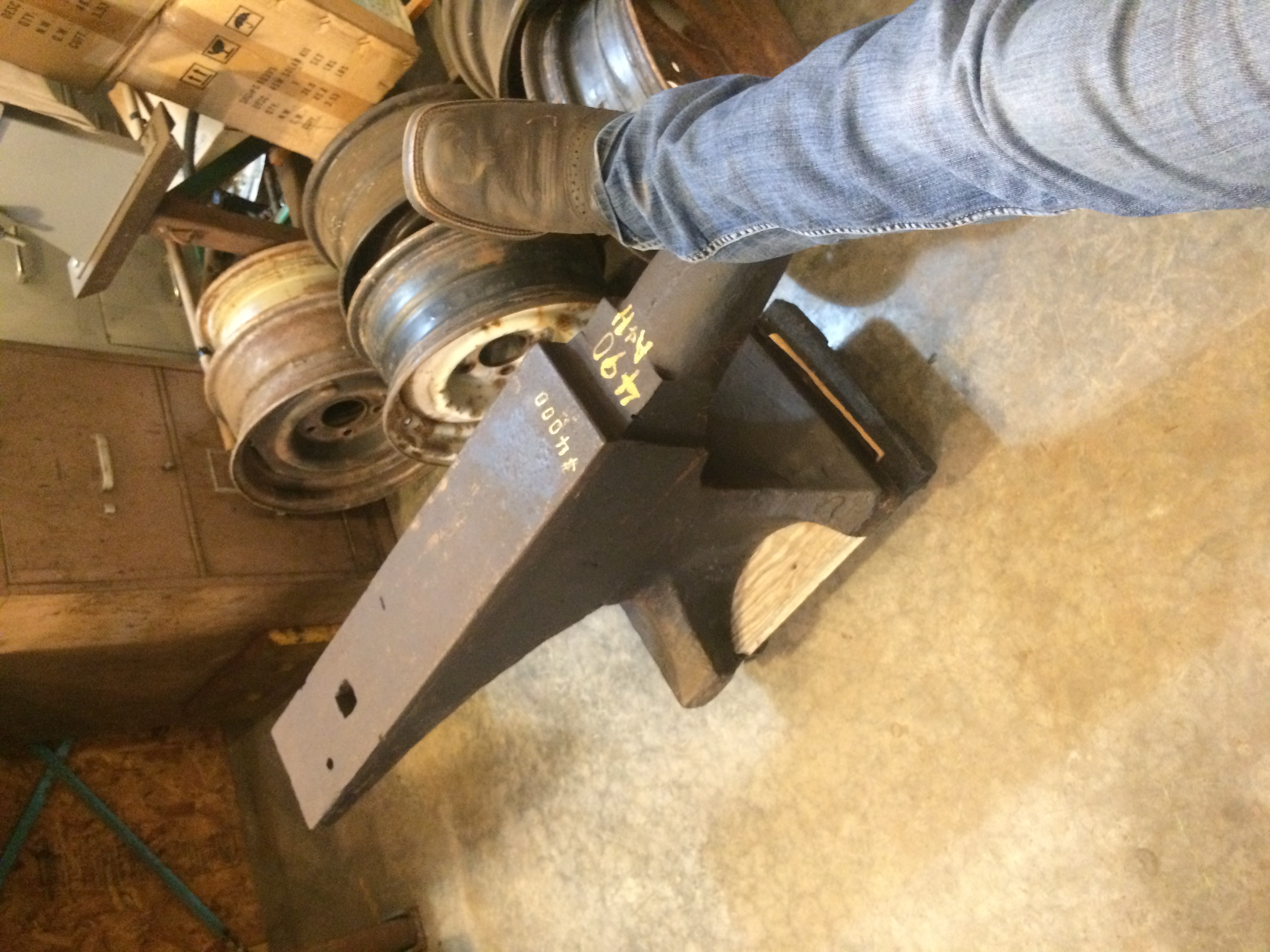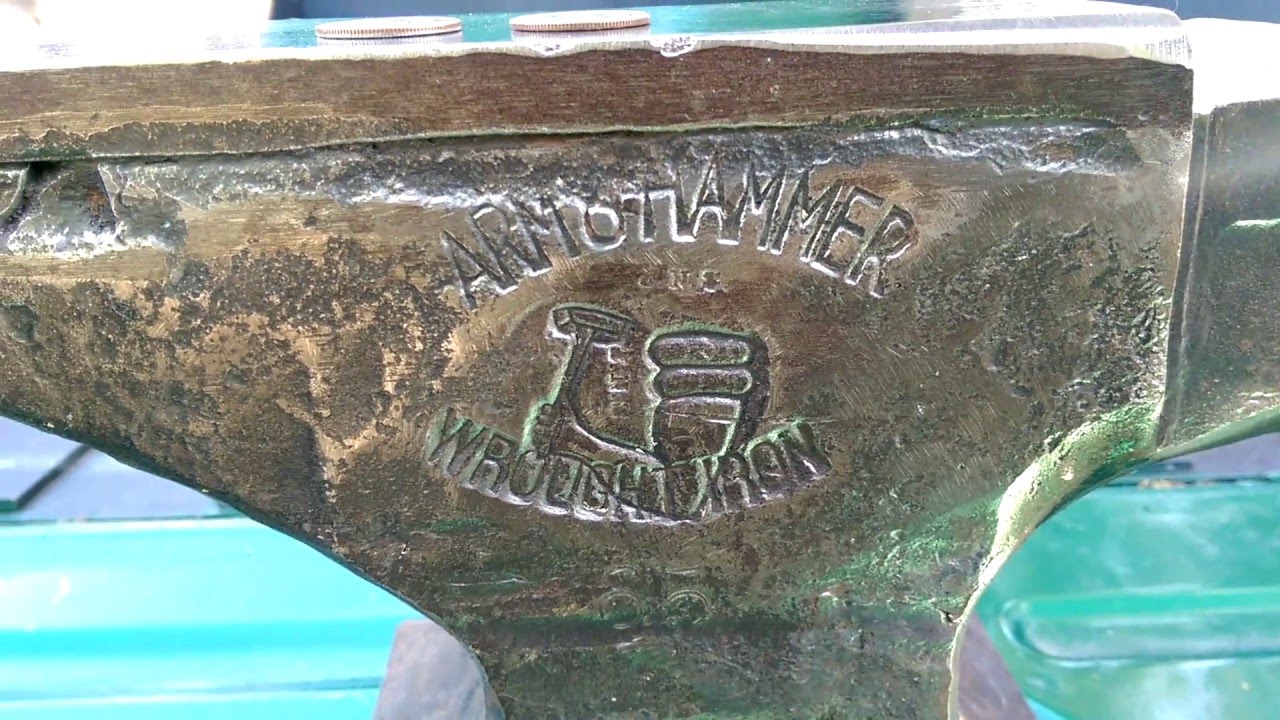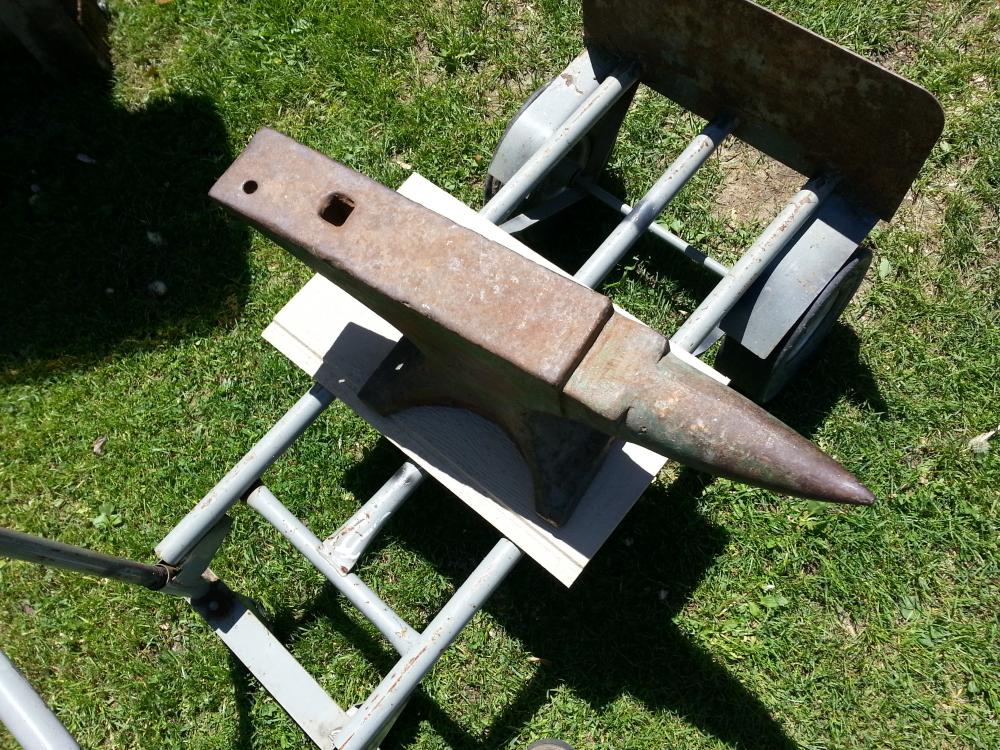Arm And Hammer Anvil Serial Numbers
This anvil is either a Hay budden, a Trenton or an Arm & Hammer. Those three brands used serial numbers. Because the serial number is on the left foot I'm leaning toward Trenton or Arm & Hammer (all very high quality anvils BTW). Lift the anvil up by the horn so it is leaning back on the heel so you can see the bottom. Created Date: 5/18/2008 9:28:06 PM. If you see a series of numbers (serial number) on the front foot, it is almost certainly to be a Trenton, Hay-Budden or Arm & Hammer. If it starts with an A, it would be an H-B. Arm & Hammers do not go over about 52,000.
Without a clear logo stamp on the side I can't be certain but my instincts tell me it's a Trenton. The tells are the heavy fuller marks from drawing out the tail and what appears to be a peened weld at the waist separating the top from the bottom. Also, the voids and pitting in the base suggest that the base is cast iron.Trenton made their anvils by arc welding a cast iron base to a forged top. The bases were purchased, while the tops were forged in-house.has a Trenton thatowns a copy of Anvils in America. He might be able to confirm my guess.Edit: After doing a bit more searching, I think it might be a Belknap.
If so, that would confirm your thoughts on it being an Arm & Hammer anvil (same manufacturer as Arm & Hammer: Columbus Anvil & Forging Co). Trenton anvils were made by Columbus Forging & Iron Co and are very similar in design.

Either way, you win!. Thanks for reply. Do you know if the Trentons only had the pill shaped indent on bottom?
You are correct about the cast iron base and forged top. After flour dusting the logo again I can just barely make out an OC above the Chicago.
From a post on iforgeiron I just found, this would put the lettering in about the right spot for it to be a Bullock hardware store stamp. Thanks for suggesting Belknap as a search for that lead to me finding the iforgeiron page.I have no idea what they were doing with the cutting shelf. Camfrog pro untuk pc free.
It has 2 grooves on both sides where it looks like they bent rod around it. It is mushroomed out on both sides. Do you think it would hurt the value of the anvil if I would clean up the mushroomed sides of the cutting shelf? Just the overhanging steel that has been squished out past the original shelf.
It is around 3/16' on both sides. As much as I hate the idea of anybody taking a grinder to an old anvil, I am just not sure if grinding the steel overhang off the soft part of the shelf is a good idea. Thanks again. Don't really know about the recess in the base. I do know that Trenton sourced their bases from more than one place, but I don't know how specific they were about their design requirements.
Based on their willingness to ship anvils that had poorly stamped logos, I believe that they didn't care as long as it had a recess of some kind (to put the weight out on the feet and prevent rocking) and had their leg design on the outside. But that is pure speculation on my part.I think cleaning up the edges on the cutting table will only help the value. It will certainly make it look a lot less boogered. If it was mine and intended to use it, I would seriously consider making the horn a bit longer by grinding the remainder of the cutting table off completely. It's almost gone now and continuing to use it as a cutting surface would only damage the horn at this point. I also own two Trentons. It is in fact made by Columbus Anvil and Forging Co.
It was made for Bullcock H Cannon Co. Postman has record of just five of these anvils made for that company. He mentions a serial number 37209 for one of them. Your serial number 38508 would put the production year within 1922-1923 Arm and Hammer anvils share many of the same shapes and qualities of Trenton anvils. Columbus Anvil and Forging Co. Was actually started by a former employee and anvil maker for Columbus Forge and Iron Co. (Trenton) They were neighbors and even had some forgings done at each others shops.
Arm and Hammer bought some of the same cast steel bases that Trenton used. Postman says that a higher percentage of Arm and Hammer anvils he has seen were in far better condition than any other make of anvil he has seen. You have a fine anvil there, Nice weight to do anything you'll need. I also see the Trenton in the back, Whats the info on that one?. Thank you for the info.
Nice to know the date. It makes you appreciate them more knowing at least a little of their life story.

Just a shame they can't talk. She has a great rebound with no dead spots.The other one I am sure is a 176 pound HB. Solid tool steel forge welded onto a wrought base.
No cast iron. Marked Lakeside on logo. I could start another thread with that one. Or just put it here. To be honest I love the old anvils.
AIA is on Christmas list. I am using them mostly for blade smithing.
A subreddit devoted to all things blacksmith. Feel free to show off your latest creations or get advice on a problem, or anything else related to blacksmithing!January:February:March:April:May/June:Please remember that any information/tips/tricks you get from this subreddit are not the end-all-be-all of blacksmithing. This is a multi-thousand year old trade and much of the information garnered from those times were lost during the industrial revolution.

Do your own research to double check if you agree with the opinions stated here before following them.This Sub now has a Discord Channel.Beginner? Read our and, And be sure to check out below.WARNING!!! Read before attempting any kind of forging.Rules and guidelines for posting:.Please be considerate to others when posting/commenting. Blatant troll posts/comments will be removed.Posts of YouTube videos, gifs, or images must include the beginnings of a discussion or a write up in the comments with a minimum of three sentences. Posts without a submission comment from the OP will be removed within 24 hours.Obviously this sub is for blacksmithing related topics, so keep posts related to blacksmithing.Blatant advertising and for sale posts are not allowed.When reporting content, you MUST state WHY you reported it.Any NSFW posts will be reviewed by the mods and may be removed based on our judgement of the value of the content.Further resources:.- a suggested program of study to learn hand forging.Have an englishweight anvil? Try this nifty little tool from to find out how much it weighs in lbs.Dictionary from for those hard to google terms.ABANAs list of in North America.Appalachian Blacksmiths Association list of in the USBooks:.(Lots of info about Metallurgy)Projects.Project ideas.Some very good tutorialsOur friends:. Arm and Hammer anvils were produced by the Columbus Anvil and Forging Company of Columbus, Ohio between 1900 and 1950.
Only 51,000 to 52,000 were made, and at least 80% were made before 1920. Your serial number suggests perhaps around 1930 as an estimate.Arm and Hammer anvils are of high quality, equal or superior to the best Hay Buddens and Trentons, and yours appears to be in excellent condition, perhaps collector grade. I would expect to pay a premium price for this anvil. Treat it with care and respect to protect your investment. Nice anvil!.
I would suggest using it sparingly and for light work until you get more comfortable with forging since you have another to work on. Regarding a collector, that would depend on his budget and how important it would be to add to his collection. For valuation, the most important consideration is what someone would be ready, willing, and able to pay for it. In your case, that would be the amount you paid.
Arm And Hammer Anvil Identification
Another important consideration is recent comparable sales. That would be difficult in your case because not many vintage anvils of such good quality and in such good condition come up for sale. I can't give you a number for you to feel good or bad. An anvil of this quality and condition is likely to increase in value because of rarity, so worst case scenario you bought it too soon.
Arm And Hammer Anvil Value
You bought it and now it's yours to enjoy. Have fun!.